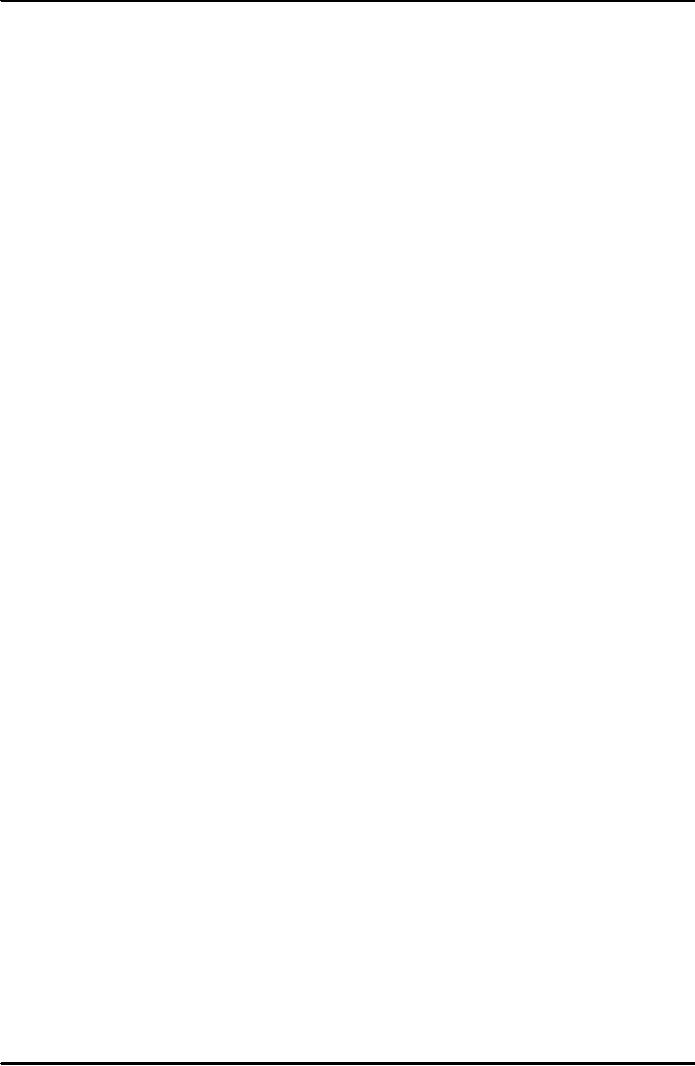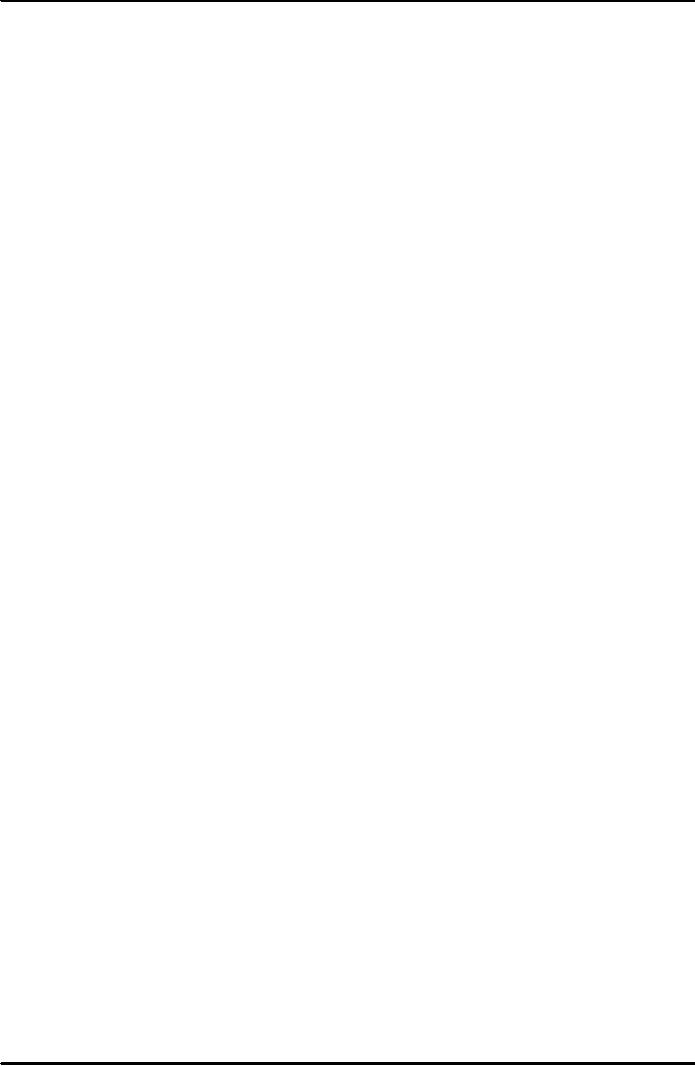 |

Introduction
to Economics ECO401
VU
Lesson
10.2
MACROECONOMIC
EQUILIBRIUM & VARIABLES; THE
DETERMINATION OF
EQUILIBRIUM
INCOME (CONTINUED...........)
Investment
and Investment Demand
Curve:
Investment
(I) or gross capital
formation is any economic
activity (usually undertaken by
firms)
that
forgoes consumption today
with an eye to increase
output in future. Investment is by
far
the
most volatile component of
aggregate demand.
The
investment demand curve
shows the relationship
between the level of
investment and the
cost
of borrowing for the firm
(i.e. the interest rate),
plotted in i-I space. The
cost of borrowing
is
important because most
investments are financed
using borrowed resources
(e.g. loans
from
banks). The relationship
between the interest rate on
such borrowing and
investment
demand
is obviously negative, i.e. as
the interest rate goes
up, investment demand
decreases.
Types
of Investment:
Investment
can be of various types:
residential and non-residential
construction, purchases of
producer
durables (i.e., capital
equipment, machinery etc.)
and buildup of
business
inventories.
While all these different
types are affected t some
extent by the interest rate,
there
are
other important determinants as
well.
i.
Residential construction depends
upon the number of willing
house-buying
households,
their wealth and
indebtedness levels, their
ability to obtain a
house-
building
loan from financial
institutions and the cost of
housing units.
ii.
Non-residential construction depends
upon the willingness and
ability of firms to
buy
commercial property, the
vacancy rate of existing
units, the needs of
business
units for additional
commercial space, and firms'
ability to meet
increased
rental costs which are
directly linked to their
current and expected
costs
and sales.
iii.
The demand for producers'
durable purchases depends on
utilization of existing
productive
capacity, the availability of
advanced (more efficient)
technology,
current
and expected sales and
existing and future
competition.
iv.
Changes in business inventories
depend on current and
expected sales,
current
and
expected inventory prices,
and certainty of inventory
deliveries.
Imports,
Exports and Trade
Balance:
Imports
are goods and services
that are produced in another
country and consumed in
the
home
country. Thus a refrigerator
produced in Korea brought
into Pakistan to be sold
here
locally
would characterize as an
import.
Exports
are goods and services
that are produced in the
home country and consumed
in
another
country. Thus a communications
satellite produced in Pakistan
but sold to
neighboring
Iran
would categories as a Pakistani
export.
A
country's imports are
related to its level of
income, exchange rate,
domestic prices
relative
to
prices in foreign countries,
import tariffs (taxes and
customs duties levied on
imported
goods),
and quantitative restrictions
(quotas) on imported goods.
Imports are influenced by
the
same
variables except that they
are affected by foreign, not
home, country income
levels.
Trade
balance is the excess of
exports over imports. A
negative trade balance is
called a trade
deficit.
Because the determinants of a
country's exports and
imports change with time, it
is
reasonable
to expect a country's trade
balance to change over
time.
Fiscal
policy:
Fiscal
Policy is a government program
with respect to i) expenditure
(G): the purchase of
goods
and services and spending in
the form of subsidies,
unemployment benefits etc.
and ii)
tax
revenue (T): the amount
and type of taxes.
T-G
is referred to as the fiscal
balance. If G>T, there is a
fiscal or budget deficit; if
G<T, there
is
a fiscal or budget surplus. If
G=T, there is a balanced
budget.
98

Introduction
to Economics ECO401
VU
DETERMINATION
OF NATIONAL INCOME
The
450 Line
and Equilibrium:
The
450 line
drawn in Y-X space has the
feature that at any point on
the line, the
horizontal
and
the vertical distances are
the same. Thus, if the
units used to measure X and
Y are the
same
(i.e. same scales), the
values of the two variables
at any point along the
line are equal.
The
450 line
drawn in expenditure-income (or
AD-Y) space captures
macroeconomic
equilibrium
in the economy (recall,
macroeconomic equilibrium obtains
when AS = AD = Y). At
all
points along this line,
expenditure and income are
equal.
Superimposing
the aggregate demand (AD)
line or expenditure function on
the 450 line
diagram
helps get the level at
which a particular economy's
equilibrium is struck; i.e.
the point
at
which the AD line intersects
the 450 line.
The
AD or expenditure function is given by
AD = C + I + G +
(X-M). We saw
earlier that the
C
function was upward sloping
with positive intercept but
slope between 0 and 1 (i.e.
less
steep
than the 450 line).
Adding the I, G and X-M
functions to the C function
simply involves
moving
the C line vertically
upwards (parallel shift). So
C+I will be higher than C by
the amount
of
I; C+I+G will be higher than
C+I by the amount of G; and
C+I+G + (X-M) will be higher
or
lower
than C+I+G depending on
whether the country is
running a trade surplus or
deficit,
respectively.
Starting
from a certain equilibrium
level, any increase in G, I
and (X-M) will cause a
multiplied
increase
in income. Thus depending on
the slope of the AD line, it
is possible for a
$10mn
increase
in G (shown by an upward vertical
shift of the AD line) to
lead to a $50mn increase
in
equilibrium
income and
expenditure.
In
the above example, if the
economy had started from
the full-employment equilibrium,
then
the
$10mn increase in G would
lead to an inflationary gap. An
inflationary gap refers to
a
situation
where there is pressure on
prices to rise. The size of
the inflationary gap is
$10mn,
i.e.
the amount by which the
C+I+G+NX line must shift
down to bring equilibrium
income back
to
the full employment level.
Likewise, a deflationary gap
could result if, starting
from the full
employment
level, there was a reduction
in G.
Algebraic
determination of equilibrium:
Algebraic
determination of equilibrium can be
done by inserting the
plugging the
consumption
function
in place of C in the
equation
AD
= C + I + G + (X-M)
In
the absence of taxes, a
consumption function simply
collapses to C = a + bY.
In
equilibrium,
Y
= AD
Therefore,
Y*
= a + bY* + G + I + (X-M)
This
leads to:
Y*
= [1/(1-b)] . ["a" + I + G +
X-M]
a
is the autonomous part of
consumption, i.e. the level
of consumption that is independent
of
income.
Equilibrium
analysis can also be done
using the injections-leakages
approach, i.e. by
identifying
the point where the
upward sloping leakage
function (S+M+T) intersects
the
horizontal
injections line
(I+G+X).
99
Table of Contents:
- INTRODUCTION TO ECONOMICS:Economic Systems
- INTRODUCTION TO ECONOMICS (CONTINUED………):Opportunity Cost
- DEMAND, SUPPLY AND EQUILIBRIUM:Goods Market and Factors Market
- DEMAND, SUPPLY AND EQUILIBRIUM (CONTINUED……..)
- DEMAND, SUPPLY AND EQUILIBRIUM (CONTINUED……..):Equilibrium
- ELASTICITIES:Price Elasticity of Demand, Point Elasticity, Arc Elasticity
- ELASTICITIES (CONTINUED………….):Total revenue and Elasticity
- ELASTICITIES (CONTINUED………….):Short Run and Long Run, Incidence of Taxation
- BACKGROUND TO DEMAND/CONSUMPTION:CONSUMER BEHAVIOR
- BACKGROUND TO DEMAND/CONSUMPTION (CONTINUED…………….)
- BACKGROUND TO DEMAND/CONSUMPTION (CONTINUED…………….)The Indifference Curve Approach
- BACKGROUND TO DEMAND/CONSUMPTION (CONTINUED…………….):Normal Goods and Giffen Good
- BACKGROUND TO SUPPLY/COSTS:PRODUCTIVE THEORY
- BACKGROUND TO SUPPLY/COSTS (CONTINUED…………..):The Scale of Production
- BACKGROUND TO SUPPLY/COSTS (CONTINUED…………..):Isoquant
- BACKGROUND TO SUPPLY/COSTS (CONTINUED…………..):COSTS
- BACKGROUND TO SUPPLY/COSTS (CONTINUED…………..):REVENUES
- BACKGROUND TO SUPPLY/COSTS (CONTINUED…………..):PROFIT MAXIMISATION
- MARKET STRUCTURES:PERFECT COMPETITION, Allocative efficiency
- MARKET STRUCTURES (CONTINUED………..):MONOPOLY
- MARKET STRUCTURES (CONTINUED………..):PRICE DISCRIMINATION
- MARKET STRUCTURES (CONTINUED………..):OLIGOPOLY
- SELECTED ISSUES IN MICROECONOMICS:WELFARE ECONOMICS
- SELECTED ISSUES IN MICROECONOMICS (CONTINUED……………)
- INTRODUCTION TO MACROECONOMICS:Price Level and its Effects:
- INTRODUCTION TO MACROECONOMICS (CONTINUED………..)
- INTRODUCTION TO MACROECONOMICS (CONTINUED………..):The Monetarist School
- THE USE OF MACROECONOMIC DATA, AND THE DEFINITION AND ACCOUNTING OF NATIONAL INCOME
- THE USE OF MACROECONOMIC DATA, AND THE DEFINITION AND ACCOUNTING OF NATIONAL INCOME (CONTINUED……………..)
- MACROECONOMIC EQUILIBRIUM & VARIABLES; THE DETERMINATION OF EQUILIBRIUM INCOME
- MACROECONOMIC EQUILIBRIUM & VARIABLES; THE DETERMINATION OF EQUILIBRIUM INCOME (CONTINUED………..)
- MACROECONOMIC EQUILIBRIUM & VARIABLES; THE DETERMINATION OF EQUILIBRIUM INCOME (CONTINUED………..):The Accelerator
- THE FOUR BIG MACROECONOMIC ISSUES AND THEIR INTER-RELATIONSHIPS
- THE FOUR BIG MACROECONOMIC ISSUES AND THEIR INTER-RELATIONSHIPS (CONTINUED…….)
- THE FOUR BIG MACROECONOMIC ISSUES AND THEIR INTER-RELATIONSHIPS (CONTINUED…….):Causes of Inflation
- THE FOUR BIG MACROECONOMIC ISSUES AND THEIR INTER-RELATIONSHIPS (CONTINUED…….):BALANCE OF PAYMENTS
- THE FOUR BIG MACROECONOMIC ISSUES AND THEIR INTER-RELATIONSHIPS (CONTINUED…….):GROWTH
- THE FOUR BIG MACROECONOMIC ISSUES AND THEIR INTER-RELATIONSHIPS (CONTINUED…….):Land
- THE FOUR BIG MACROECONOMIC ISSUES AND THEIR INTER-RELATIONSHIPS (CONTINUED…….):Growth-inflation
- FISCAL POLICY AND TAXATION:Budget Deficit, Budget Surplus and Balanced Budget
- MONEY, CENTRAL BANKING AND MONETARY POLICY
- MONEY, CENTRAL BANKING AND MONETARY POLICY (CONTINUED…….)
- JOINT EQUILIBRIUM IN THE MONEY AND GOODS MARKETS: THE IS-LM FRAMEWORK
- AN INTRODUCTION TO INTERNATIONAL TRADE AND FINANCE
- PROBLEMS OF LOWER INCOME COUNTRIES:Poverty trap theories: